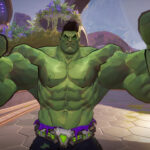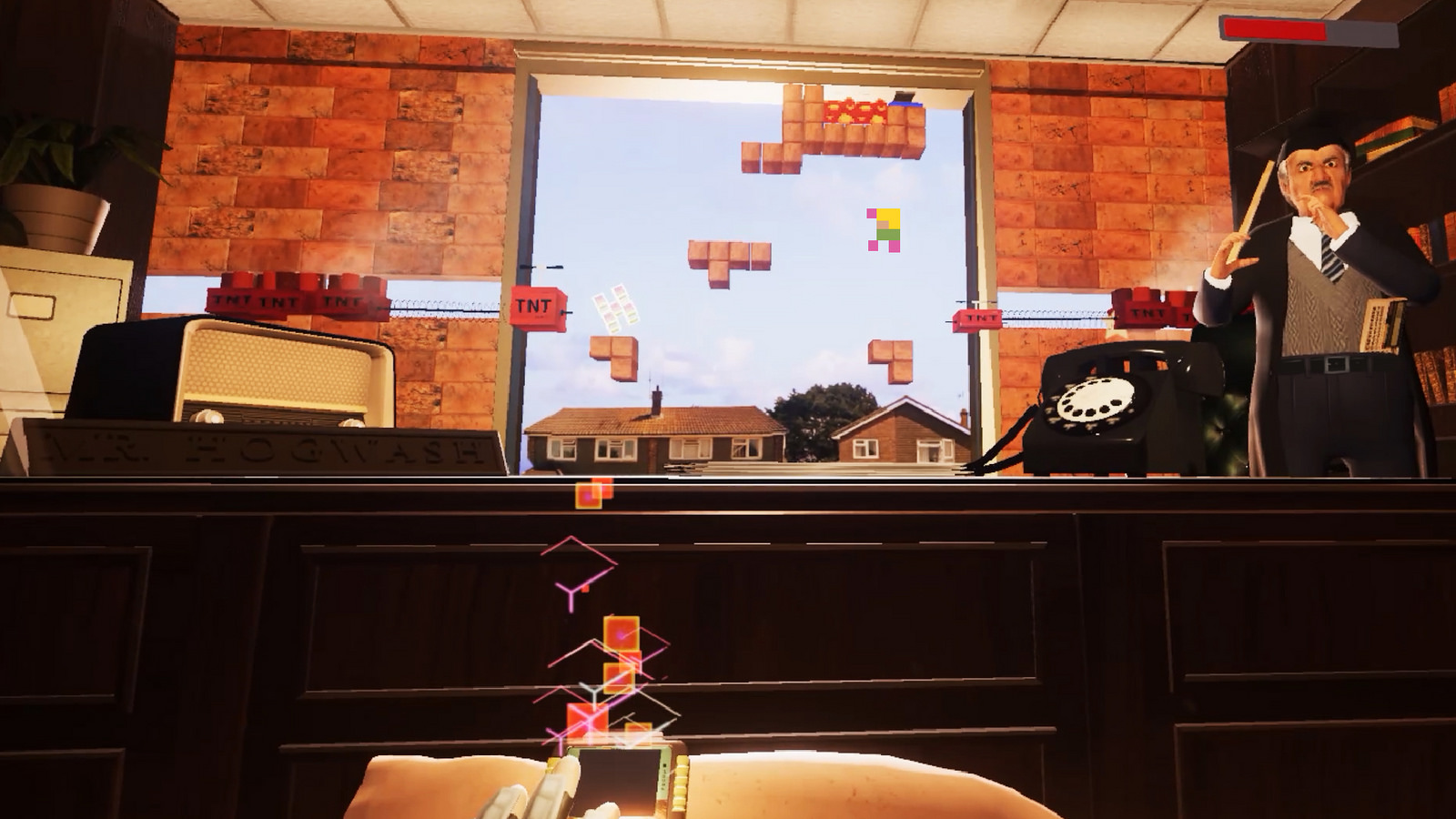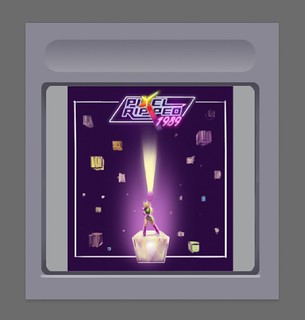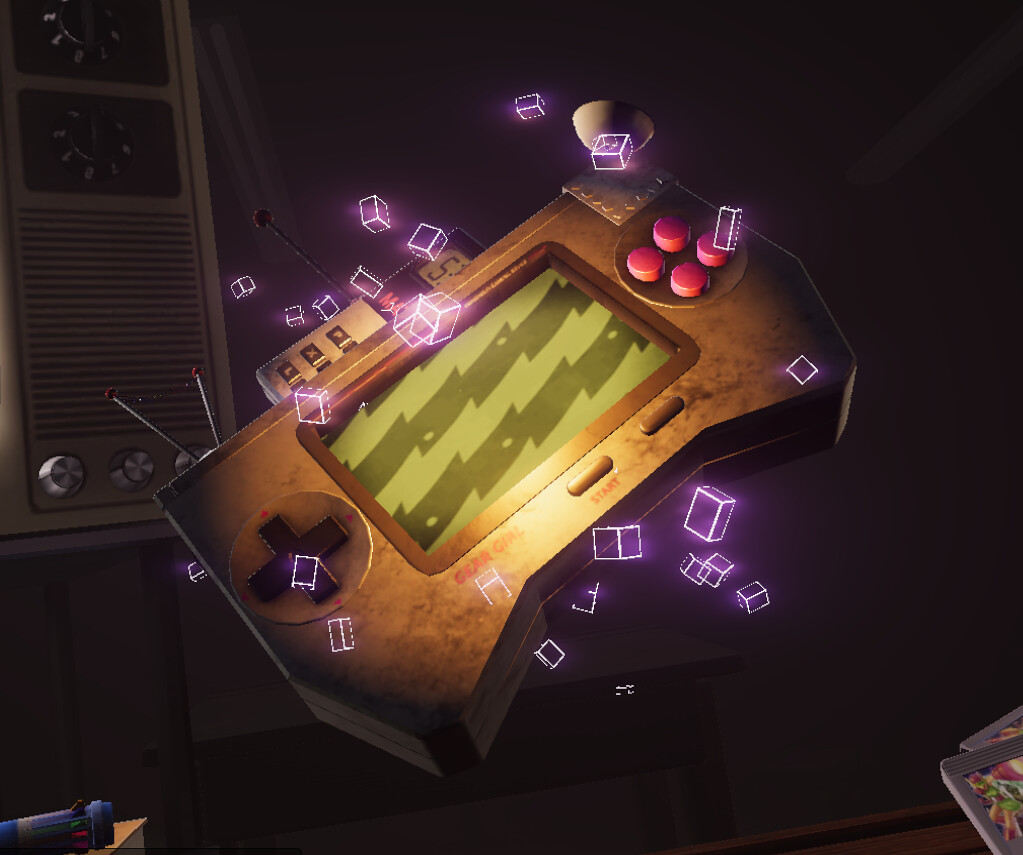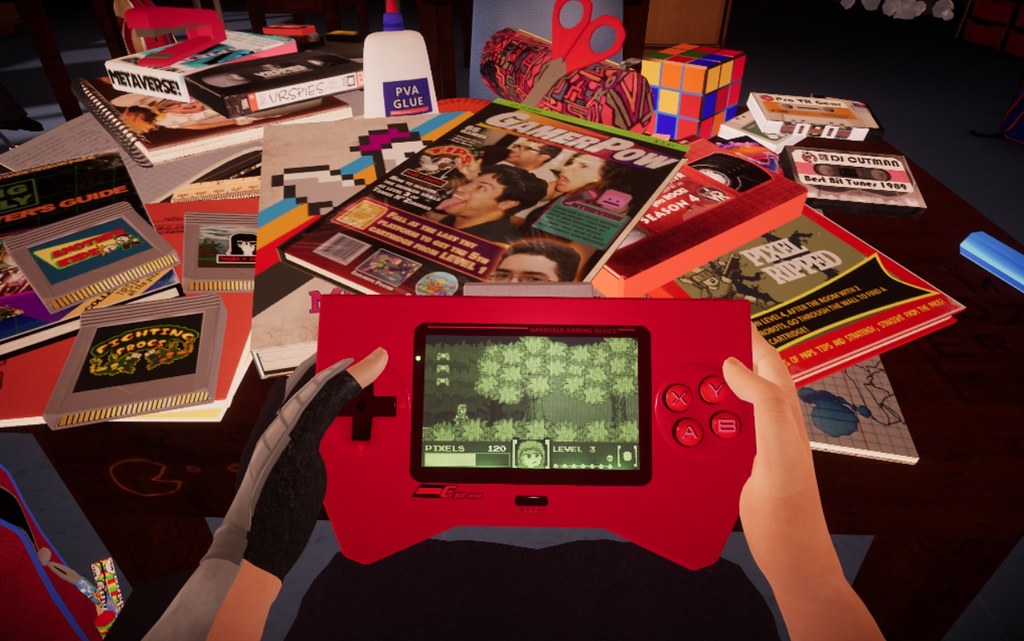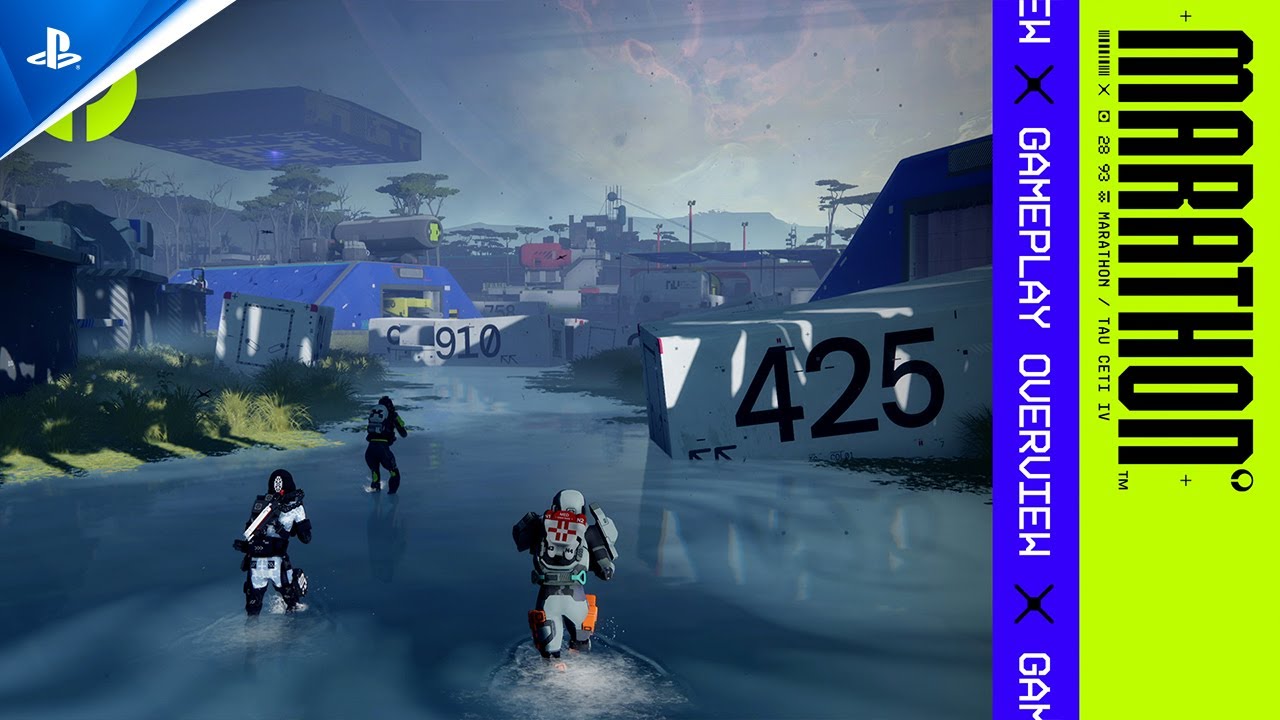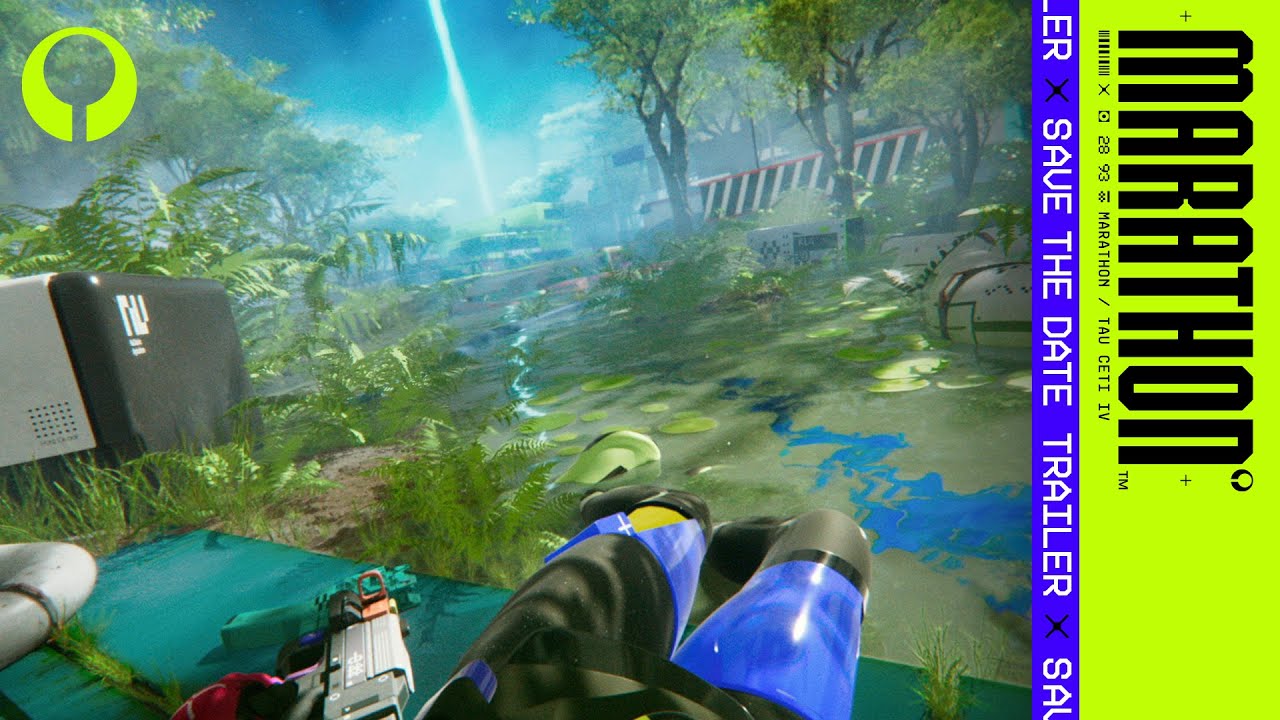If you had told younger me that I would be releasing a PlayStation VR game someday, I would not have believed you. I’ve been a gamer all my life, but I didn’t even realize back then that making games was something a normal human being could do. To me, games were just these magical things that came from faraway places like Japan.
The idea for Pixel Ripped 1989 came from a dream: I dreamt that I was in my room playing a 16-bit console. As I played, the graphics in the game began to evolve, and as that happened, the room around me started to look like the game.
I realized how weird and powerful it felt to be inside a pixelated game world like that. When I woke up, I immediately knew I had to do something with this idea, and that virtual reality was the only way to experience what I had seen in that dream. At the time, I was studying game design and development at a university in London, and decided my thesis project would involve playing a classic game within a VR game, a possibility to relive my past growing up playing these games.
I set the first game in the end of the 1980s, in the portable 8-bit console era, and you would have to play the game in class and hide it from the teacher. Even though it was a nice idea, I was having trouble making the story come together in my mind. I had automatically made the association “gamer kid in the 80s = boy” and made the main character a boy.
When I changed the video game character and the human who controls her into Dot and Nicola, the stories and ideas flowed because it became my story. I was the kid who had grown up trying to play games while everything and everyone around me tried to stop me. It turns out I was doing exactly what was needed to embark on this journey and create Pixel Ripped 1989.
The idea might have come from a dream, but it was a bug that added the best thing to the game. One day I was working on a level and the game rendered Dot, the main 2D character, on top of the classroom desk in the 3D world. I could move her around the real world, and it was so weird and mind-blowing.
I immediately knew that this was amazing. Now every level in the game, and in fact the entire narrative of the game, is about this experience. The evil Cyblin Lord steals the Pixel Stone that allows him to bring the 2D and 3D worlds crashing together, with physical platforms for 2D characters, and 2D characters invading the real world. This clash is also only possible thanks to virtual reality.
When we decided to launch for PS VR, the game changed once again. Having a tracked controller in VR was such a great fit for the game because it’s a game about holding a portable console in your hand. It became immersive and nostalgic at the same time.
It’s been a long and difficult journey to get here, from student project to a fully realized PS VR game. It has been four years of my life, with so many changes and challenges. I started working on it practically alone as a first game, striving forward with the help of great friends all along the way. Eventually it turned into a professional project and finally I joined up with the team at Arvore to finish the game.
This process brought on many challenges but also so many great things, amazing learnings and new people into my life. There was a lot of pressure and I had plenty of chances to give up, but it never even crossed my mind. I can’t wait to invite you into the world of Pixel Ripped, the world of my childhood that I am sure many of you share in your own memories. I hope you have as much fun playing as I had completing this journey.





